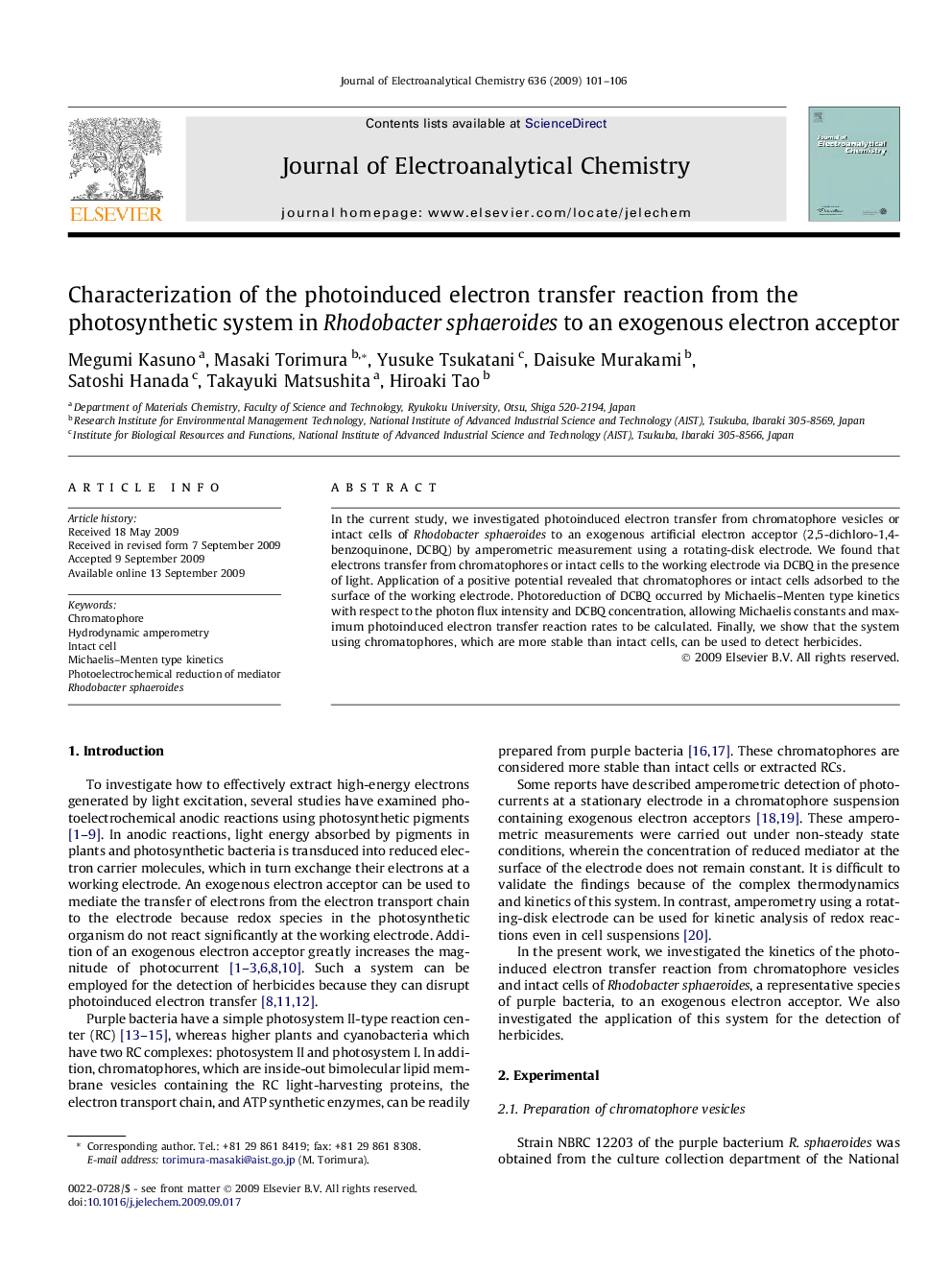| Article ID | Journal | Published Year | Pages | File Type |
|---|---|---|---|---|
| 220105 | Journal of Electroanalytical Chemistry | 2009 | 6 Pages |
In the current study, we investigated photoinduced electron transfer from chromatophore vesicles or intact cells of Rhodobacter sphaeroides to an exogenous artificial electron acceptor (2,5-dichloro-1,4-benzoquinone, DCBQ) by amperometric measurement using a rotating-disk electrode. We found that electrons transfer from chromatophores or intact cells to the working electrode via DCBQ in the presence of light. Application of a positive potential revealed that chromatophores or intact cells adsorbed to the surface of the working electrode. Photoreduction of DCBQ occurred by Michaelis–Menten type kinetics with respect to the photon flux intensity and DCBQ concentration, allowing Michaelis constants and maximum photoinduced electron transfer reaction rates to be calculated. Finally, we show that the system using chromatophores, which are more stable than intact cells, can be used to detect herbicides.
